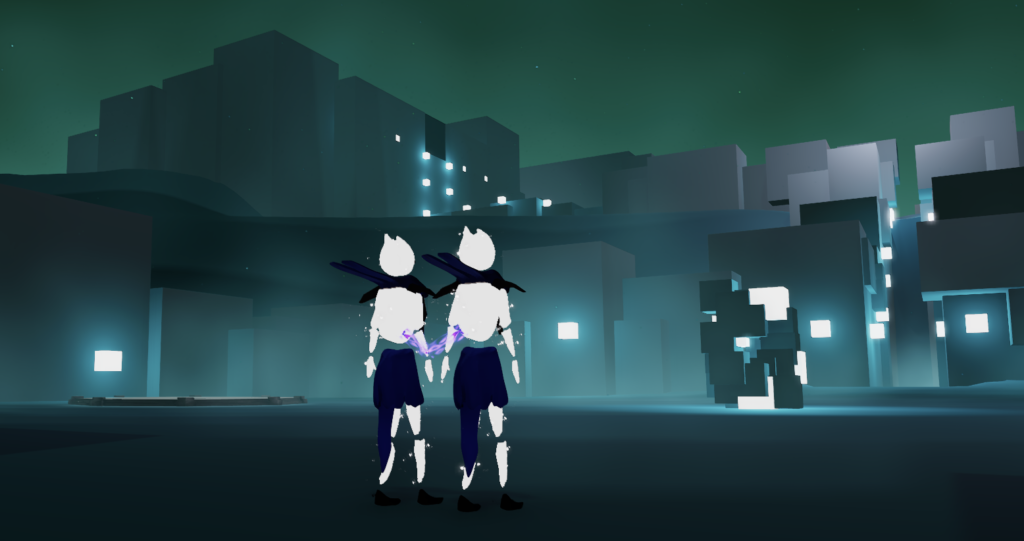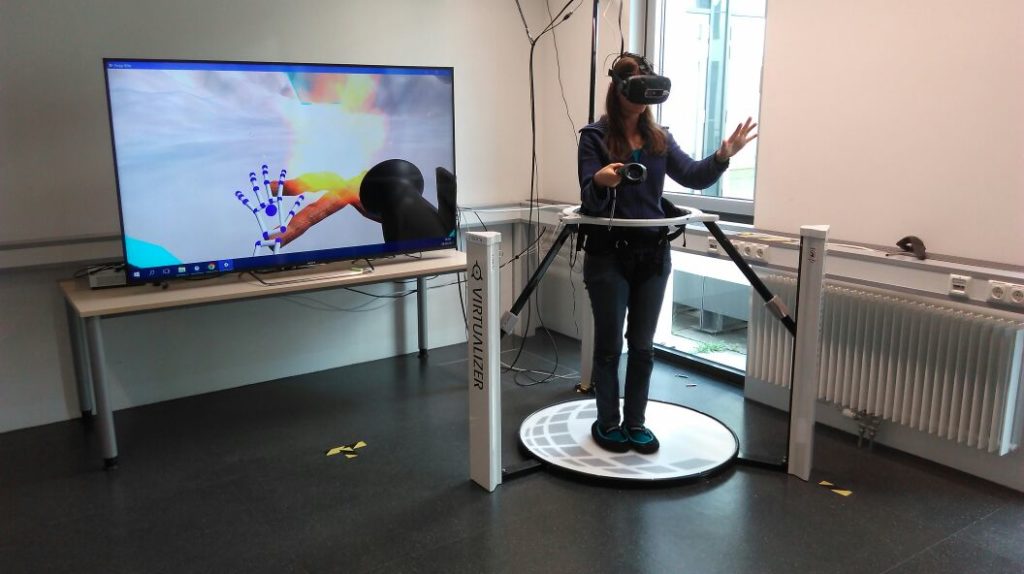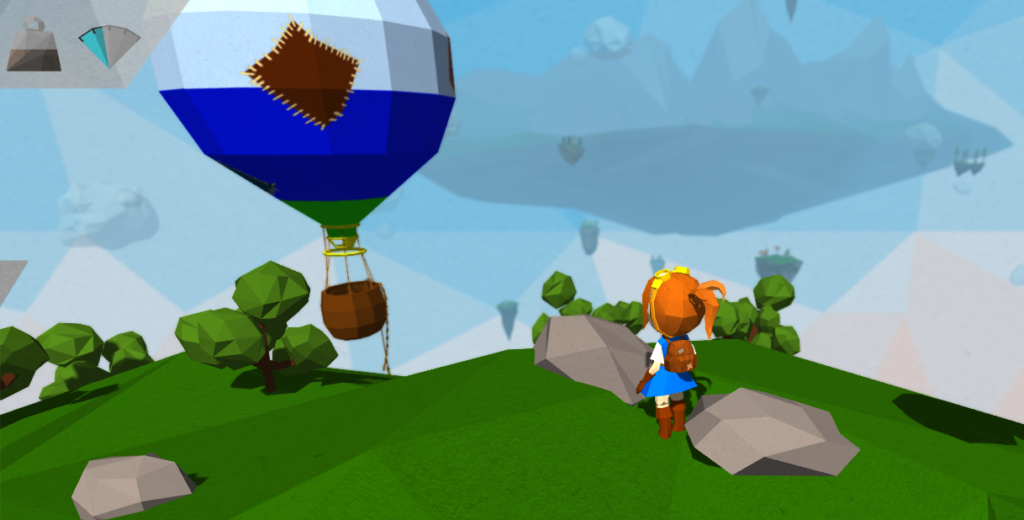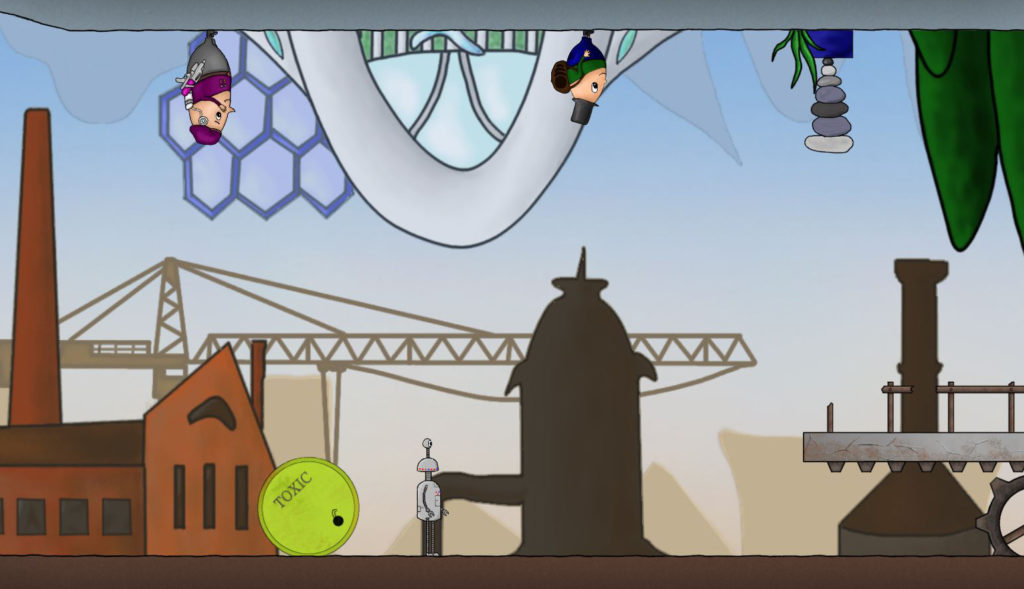Not Alone

Not Alone is a cooperative online experience for two players that metaphorically deals with the theme of friendship and conveys a sense of friendship and togetherness. It was developed as part of the final project in the Master’s computer game sciences and was developed between autumn 2017 and summer 2019.
The two characters in the game are abstract humanoid characters that players can identify with regardless of gender. They are in an abandoned abstract fantasy world, in which the character of the respective player is their only companion.
Both characters are connected in the game by a bond and can experience the world together. The further away they move away from each other, the more bleak and lonely the world becomes. But if they move again to each other, the world becomes more cheerful again. If the players move too far away from each other, the tape is torn apart. If the band is broken, it can be reconnected. However, there is a node in the band. Each node symbolizes a hurdle of individual travel.
Since the core team at Not Alone consisted only of Alexander Dombert and me, we both took care of the game design, level design, project management (coordination of external employees) and the narration together. In programming, we split up and I took care of both network programming, shader programming and some of the game logic. In addition, I created some of the VFX.
Peng-Win

Peng-Win is an experimental shooter prototype created in the summer semester 2017, in which gamers can orient themselves and move around using Cyberith’s Virtualizer and HTC Vive VR glasses. In addition, Leap-Motion technology has been integrated to the interaction to enable more intuitive and accurate hand-held interactions. Due to the running feeling within the virtualizer, an ice world was chosen as the environment. Appropriately, penguins appear to the player as an opponent, on which the player can shoot with the help of a “cyborg arm” similar to a snow cannon.
In this project, I took care of the integration of the Cyberith Virtualizer into Unity and the subsequent programming of the game logic, AI and a Frost shader.
The game was exhibited in autumn 2017 at the Bayreuth Cineplex: https://medienwissenschaft.uni-bayreuth.de/gil/2017/11/28/scrum-cineplex/
Aloft

aloft is the final project in the Bachelor’s degree in Media Science and Practice, which was developed between November 2015 and May 2016.
The concept of aloft is to turn a survival game with action elements into an eventful journey: the player must maneuver his hot air balloon through a long chain of flying islands and always provide himself with the necessary resources. The control behavior during the flight is influenced by the load weight. The aim is to reach the saving continent in the distance; it is not possible to return to an island that has already been visited. To increase the replay appeal, the islands are generated randomly and in large variations.
In aloft, in addition to the game design, I took care of the creation of the complete Environment Art as well as the placement of the assets on the islands.
Link to a walkthrough: https://vimeo.com/315721119
Copernica

Copernica, a cooperative Puzzle sidescroller with Jump ‘n’ Run elements, created in the summer of 2015 in the as part of a seminar.
Its performative highlight is that the different heavy forces of the characters are reflected by the controller attitude of the players; a change of gravity can be triggered by the simultaneous rotation of both controllers. The SixAxis technology of the PS3 controllers was used for implementation.
My responsibilities were 2D Art, in addition to game design, in which everyone in the team was involved.
The results of the version of the seminar was completed in 2015 at the annual meeting of the Society for Media Studies; their playing time is approximately 45 minutes.
